






















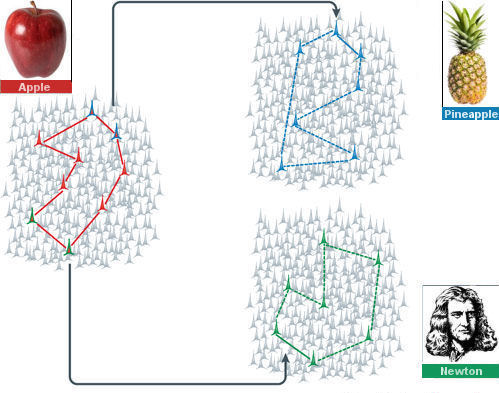
Donald Hebb's idea of cell assemblies.

Who would have thought of putting pineapple on a pizza??
Think British-style gammon steak.
Relevant ideas from cognitive psychology: DYNAMIC, ad hoc concepts; creativity.
The neurocomputational angle: how could "the fault lines of the imagination" be implemented in the brain?
Three hypotheses:
[Note that the representations implemented by synapsembles are DUAL to those implemented by neural activities.]
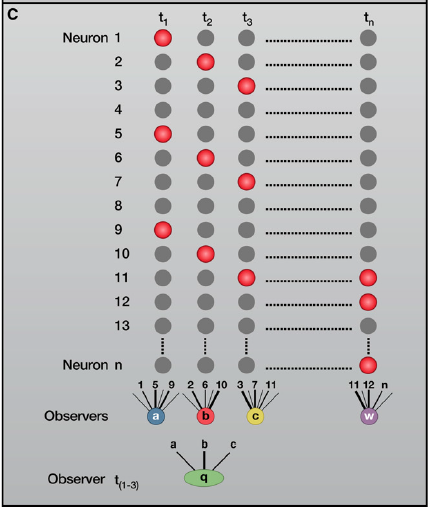
(C) Neurons that fire within the integrating window of a reader
mechanism (corresponding, e.g., to the ability of a reader neuron to integrate
its inputs within the time frame of its membrane time constant) define an assembly
(irrespective of whether or not assembly members are interconnected
synaptically among themselves). Readers a, b, c ,and
w may receive inputs from many
neurons (1 to n) by way of synapses differing in strength but respond only to
a combination of spiking neurons to which they are most strongly connected
(e.g., reader a responds preferentially to cofiring of neurons 1, 5, and 9 at \(t_1\),
even though it may be synaptically innervated by neurons 2, 6, and 10 as
well; at \(t_2\), neuron b fires in response to the discharge of neurons 2, 6, and
10).
Synaptic strengths between neurons vary as a function of the spiking history of both postsynaptic and presynaptic neuron (short-term plasticity, to be discussed next week). The response of the reader neuron, therefore, depends on both the identity of the spiking upstream neurons and the constellation of current synaptic weights ("synapsembles"). Reader mechanism q has a longer time integrator and, therefore, can link together assemblies to neural "words," reading out a new quality not present in the individual representations of a, b, and c.
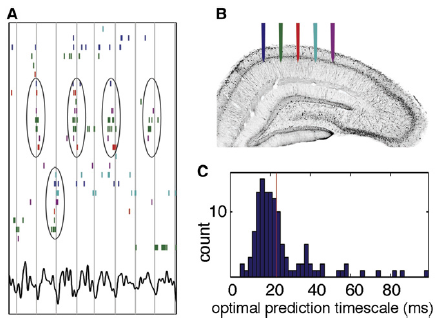
(A, B) Raster plot (A) of a subset of hippocampal pyramidal cells
that were active during a 1 s period of spatial exploration on an open
field out of a larger set of simultaneously recorded neurons, ordered by
stochastic search over all possible orderings to highlight the temporal
relationship between anatomically distributed neurons. Color-coded ticks
(spikes) refer to recording locations shown in (B). Vertical lines
indicate troughs of theta waves (bottom trace). "Cell assembly"
organization is visible, with repeatedly synchronous firing of
some subpopulations (circled). Note that assemblies can alternate (top and
bottom sets) rapidly across theta cycles.
(C) Spike timing is predictable from peer activity. [NOTE: this implies some very interesting collective dynamics, such as emergence and downward causation.] The histogram here shows the distribution of timescales at which peer activity optimally improved spike time prediction of a given cell, shown for all cells. The median optimal timescale is 23 ms (red line).
[See the synfire concept (Abeles, 1982)]
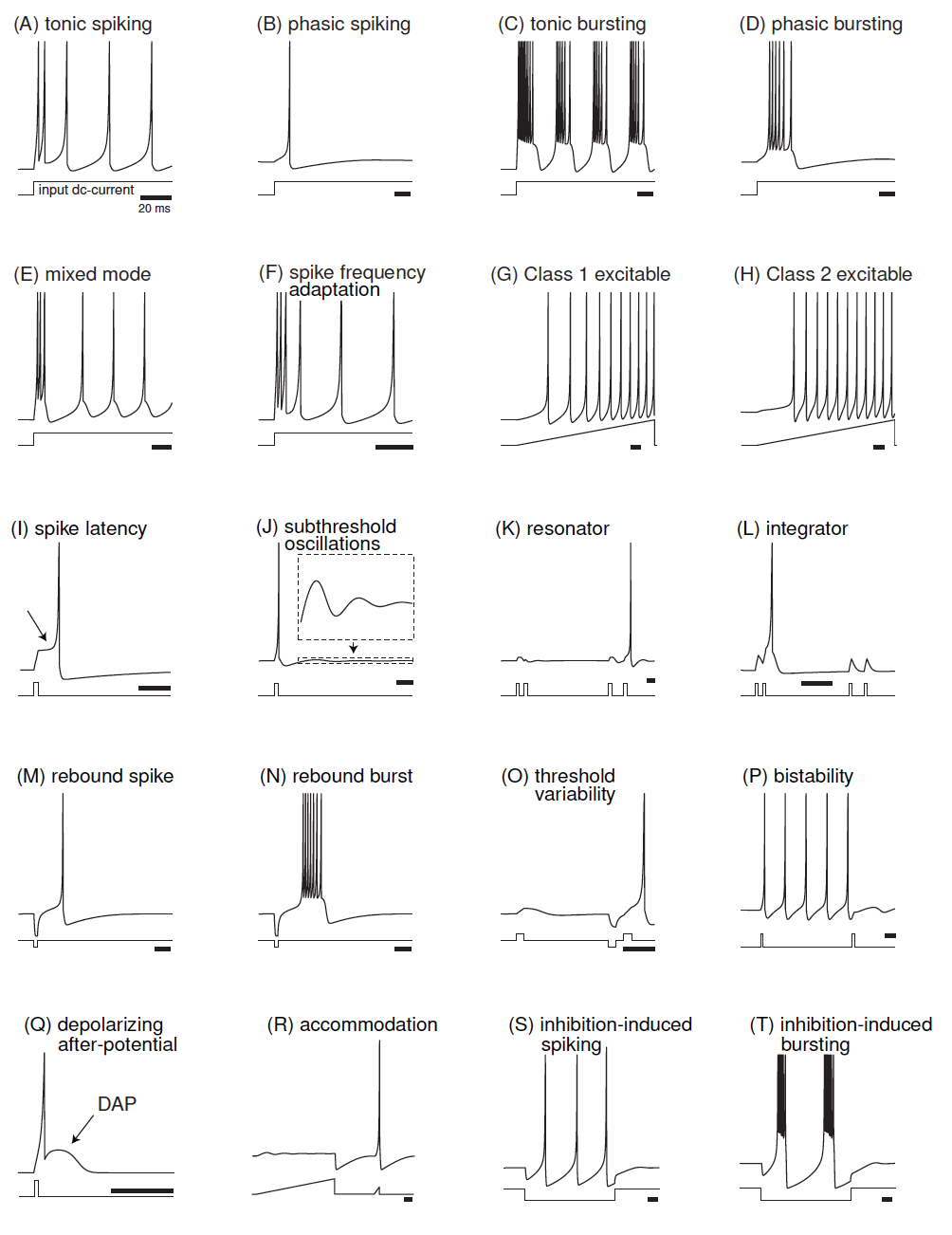
Summary of neuro-computational properties exhibited by Izhikevich's
"simple model":

Eugene M. Izhikevich, Dynamical Systems in Neuroscience: The Geometry of Excitability and Bursting, MIT Press, 2005.
Re the next slide, note especially case (K), "resonator".
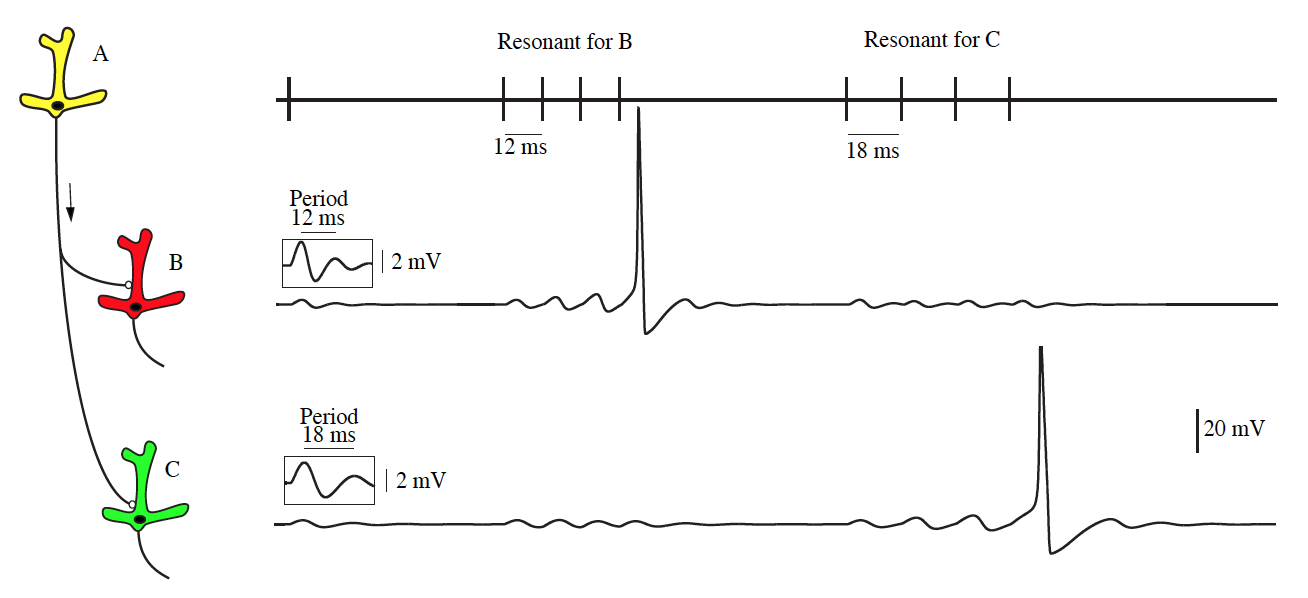
Cell A can direct its output selectively:
or
Eugene M. Izhikevich, Dynamical Systems in Neuroscience: The Geometry of Excitability and Bursting, MIT Press, 2005.
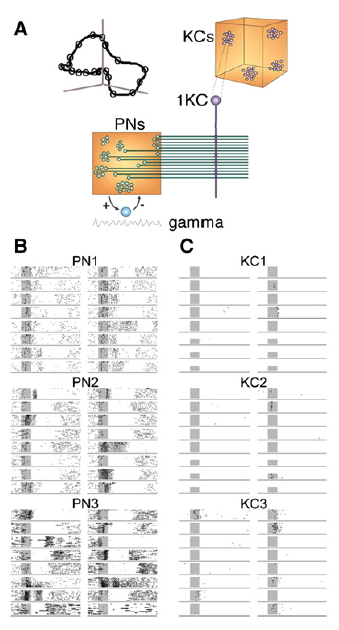
(A) Wiring diagram of the early olfactory system of the
locust. An
odorant evokes an odor-specific temporal pattern in several of recurrently
connected antennal lobe (AL) projection neurons (PNs), coordinated by a 20–30 Hz (gamma)
oscillation. Kenyon cells (KC) of the mushroom body (MB) are the readers
of the activity of AL projection neurons (PNs) and integrate their spikes.
(B) Firing patterns of 3 AL neurons (PN1-3) in response to 16 different odors. The activity of AL neurons defines the "population vector" or "state" of the network; the time-varying population vector (i.e., the shifting states) ascribes a trajectory. The state evolves over a few hundred milliseconds before relaxing back to baseline (illustrated by the curve in the inset in A).
(C) Activity of 3 KCs. Each KC carries out a pattern matching operation between its synaptic vector and the PN population activity vector. The AL output evokes a single burst in the reader KC ("sparse coding").
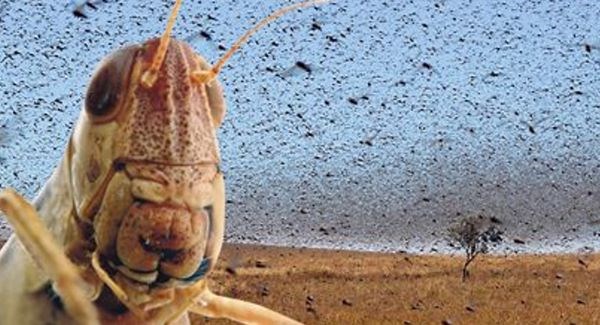
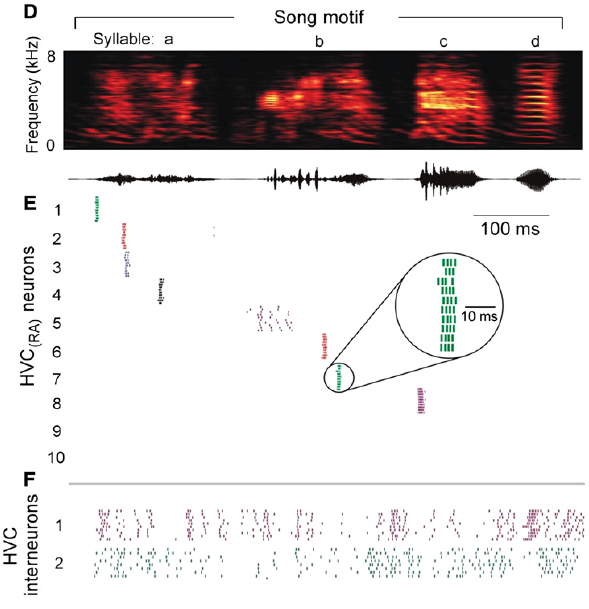
(D) Time-frequency spectrum of a zebra finch song and its amplitude
envelope.
(E) Spike raster plot of eight projection neurons in area HVC (10 repeats). Each ensemble pattern ("state") in HVC specifies a note to be sung; the temporal sequence of notes (trajectory) defines the song and is read out and sent to the motor execution system by the subsequent stages.
(F) Interneuronal activity is also temporally organized and relates to the syntactic structure of the song.
So, what is it that neurons compute natively?
Last modified: Tue Apr 16 2019 at 11:02:00 EDT